Hetepu (Peace) Family,
How are you all doing? Hopefully, everything is well with you all.
Well, I decided to post a second part due to the overwhelming response I received from the last post, and also because a received a lot of inquiries as to where I got my information from. One email in particular (I won’t state the individual’s name) where the reader stated, “Man this is great stuff! Where you get your information from so I can do the science on it?”
In most of the emails I received, I answered honestly by stating that it came from within, but for a lot of people that response was not what they wanted to hear. I must admit after reading it and contemplating on it, it sounds very cliché; as if I am trying to hoard all that I have learned and prevent someone from knowing what I know. At least that is how I use to feel when people gave me a similar response when I was much, much younger.
So, let me give you a little bit more insight about this subject. I will not bore you with how I am even got to this point in my life where I was even receptive to the Spirit. Such as the people I met from the Caribbean, the teachers, the backsliding, the calling, the initiation, and how I discovered the Maa Aankh cosmogram. Yeah, that is a whole story within itself that I wrote about extensively in my first work: Maa Aankh Vol. I. I will skip right to the historical details and how it falls in line with our purpose.
Let’s begin…
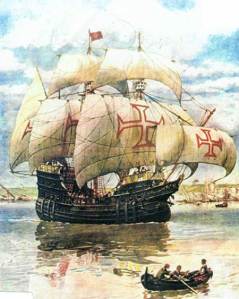
Around the 1480s Portuguese ships settled along the coast of Africa along the Zaire estuary. There are numerous explanations as to why the Portuguese were sailing around the African coast. Some claim that they were trying to replenish their finances due to the massive losses of the Crusades. Others claim that they were trying to avoid the Muslims. Whatever the reason, they settled along the West Coast of Africa and the first people they encountered were people from the Kongo-Angolan Kingdom.
Now contrary to popular belief, these First Contact Europeans didn’t get off the ship with a bible in one hand, a whip or club in the other, and began enslaving people in their own land. No, our ancestors’ story is somewhat similar to how the first Europeans encountered most Native people in the Americas and the Pacific.
In the beginning, the Kongolese people avoided these pale skin strangers in their hot garb, like the plague. After seeing that these people weren’t going anywhere they befriended them and shortly after trade began. Sounds like a familiar story we all have heard before. Right?
So, as trade goes. The Kongolese and Portuguese began trading all sorts of raw goods. The first goods that were traded according to some sources were gold and ivory. Then suddenly someone got the idea to trade prisoners. As most historians have acknowledged, it was believed that the prisoner would pay their debt of servitude off and be set free. No one could have imagined that the atrocities that followed would be so grave and severe.
Well, like all stories that speak about trade between different cultures. It wasn’t long afterwards that the mingling of beliefs and ideas occurred. Before long, ‘some’ of the Kongolese people became increasingly interested in the Portuguese Christian faith. One of these individuals in particular, was the Kongo manikongo (ruler) who would later try to convert the entire kingdom to this new faith. Naturally, there was opposition to this from fellow chieftains, which led to a civil war.

In the end, the ruler of the Kongo kingdom came out on top and established a peaceful but unequal peace agreement with the Portugal crown. One would suspect that the Kongo ruler may have believed that by forming such an alliance with a more economical and technically advanced country, that it would greatly advance his own kingdom. As a result, most of the Africans brought to the New World were prisoners of war shipped from the ports off of the coast of the Kongo. Most (if not all) of these Africans were indentured servants.
Now, what is rarely discussed is why did the Kongolese people willingly convert to Christianity? What was it about Christianity that captivated the Kongo people? Most historians don’t even discuss this because they take a Darwinistic perspective, which is that the Africans were just primitives fascinated by the Europeans. A deeper look into the Kongolese beliefs or African cosmology reveals possibly why the Christian faith intrigued some of them so much.
The Kongolese Beliefs
Unlike most of the West Africans nations, which believed in a Supreme Being and had a pantheon of divinities (orishas, abosom, vodou, etc.). The Kongo belief system was a very complex and sophisticated system, but simplistic enough for some of them to see how it mirrored the Christian faith. First, the Kongo people believed in one Supreme Being (like all of the West African people) but their religious beliefs centered on veneration of their ancestors called nkuyu (similar to Christian martyrs), basimbi spirits (similar to angels/saints) and bakulu (similar to devils).
The Kongo cosmology there was four distinct parts, which were governed by Four Moments of the Sun. Each of these ‘Moments’ in turn mirrored the four paths of humankind. For instance, Sunrise signaled a new beginning and the birth into world. The Midday Sun, which shined high in the sky, thus allowing everything to grow towards it, signified an individual’s growth and the knowledge they acquired in life. When a person died, it was seen as the Sun setting in the West, thus marking the end of the day. And, last but not least, the Midnight Sun was seen as a time of rest. This symbolized that the person’s soul had returned back home from whence it ascended from, the great waters called Kalunga. This created what was known as the Kongo Cross, dikenga or Yowa, which is very similar to the Christian crucifix.
Now, so that we don’t lose perspective, those familiar with the Kamitic/Kemetic (Ancient Egyptian) beliefs can easily see the similarities between the two cultures. This same African cosmology linking the sun and the human soul, is what archaeologists have told us is the voyage of Ra. For years, most people accepted the Westerners’ interpretation as literal gospel because they weren’t familiar with African cosmology or thinking. Only Sir E. A. Budge, who is now looked upon as charlatan by his colleagues, noted and documented these distinct similarities between the Kamitic/Kemetic people and the people of West Africa – particularly those in the Kongo. Even I had overlooked this until my grandmother had passed to the ancestral realm, and a year after her death. I noticed that her obituary clearly stated her Sunrise “her birth date” and Sunset “her last day on earth”. This is when it hit me like a ton of bricks that Ra is not the Sun! And, that Khepera, Ra, Ra Atum and Amun Ra were all the Kamitic/Kemetic Four Moments of the Sun!
Let me make it plain, the same African cosmology that existed in the Kongo existed in Ancient Egypt. Khepera is Kala (notice black in color), Ra is Tukula (both refer to the color red), Ra Atum corresponds to Luvemba (both refer to the color white and the west) and Amun Ra and Musoni (both refer to the color yellow and midnight).
Again, only Budge was keen and brave enough to make the connections. In fact in his book, Osiris and the Egyptian Resurrection, he states that major emphasis is placed upon the moon and not the sun. This is because according to Ancient African cosmology the moon corresponds to rebirth. There are some other reasons as well but I will let you research that those. Just to give you a hint, if you talk to anyone that participates in African traditions they will tell you constructive work is done during the waxing and repelling work done during the waning. Again, all referencing and practices based upon African cosmology, which can be traced all the way back to Ancient Egypt because the moon corresponds to Amun Ra, which translates esoterically to “The Hidden Ra” .
I still get chills up my spine just thinking and talking about it, because the interesting thing is? How did my deceased grandmother know about this? She didn’t study anything about Egypt? Answer, it is in our blood – genetic memories. Now, so that you don’t think I am crazy…it is not like my grandmother’s ghost appeared and she physically showed me this. No, it was more like a thought, a hunch, whereas I remembered seeing her when she was alive and the next thing I know. My attention was directed to her obituary. This is one of the ways our ancestors speak to us, but the most common form is through our dreams.
Why our dreams you ask?
Answer. It is because when we sleep our consciousness like the setting sun, travels to the spiritual realm, the 12 hours of night (as one group of the Kamitian (Kemetian) sages called it), which is where the Dead reside, hence Osarian like people, such as my grandparents.
Oh, it gets deeper, and I guarantee you that when you get it. You will clearly say, “It is like fire shut up in my bones.”
Ok, back to the African cosmology and the Kongo belief system. As I stated it was divided into Four Moments of the Sun, and these were divided into two distinct areas. One of these areas was seen as the Land of the Living and the other was the Land of the Dead. The ‘Living’ move about freely and do whatever they want, while the Dead dwell in the great waters of Kalunga. Kalunga is considered to be the abysmal waters where life began (in the Kamitic/Kemetic tradition they called this Nyu or Nyun). It separates the Land of the Living from the Land of the Dead.
In all of the West African religions and traditions the color of the Dead is the color white. In fact, the land of the Dead in KiKongo is called Ku Mpemba (Land of White). In the Kongo, this concept is based upon the fact that river clay is white or pale in color, hence it is absent of life. White is called in KiKongo mpemba and it was used to purify people because the color white is also the symbol of purity. Today this term continues to exist in places where Kongo descendants were taken such as Brazil, where chalk is still called pemba. Also, in Cuba, the term survives among Paleros (a religious sect based upon the Kongo beliefs) where chalk is called pembe.

The interesting thing about this is that according to Wyatt MacGaffey, one of the leading scholars on the Kongo culture, the Land of the Living is believed to be flawed and full of gross errors. When a Great person died it was believed that they took with them their knowledge, wisdom and experience, hence their “know-how” on how to successfully live life. Therefore, when an individual did wrong it was out of ignorance but also because they had lost connection with the ancestral Dead. So, when an individual was taken before the tribunal because of a lawsuit. If the individual was found innocent, it was believed that the just judgment returned innocence, knowledge, wisdom, peace, blessings, etc. from the ancestral dead. As a result, the one found to be innocent was anointed with white clay and a great celebration took place.
Got that?
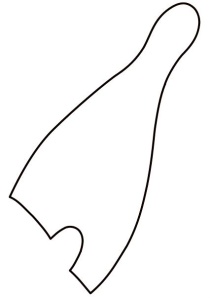
The one found to be innocent was anointed with white clay/powder and the people celebrated. Now, think back several thousand years ago about the Kamitic/Kemetic people. Hru (Horus in Greek) has been accused of being a bastard and all sorts of unlawful acts by Set. Thankfully, Hru is then found to be innocent of all crimes and is awarded the white Hedjet crown. When the tribunal ruled in Hru’s favor, what was he said to have brought back? Yes, it was said that he resurrected the Kingdom of Osar. He restored or brought back knowledge, wisdom and the righteousness of Osar (Osiris in Greek), the first Kamitic/Kemetic Ancestor. Again, the Western scholars took it literal, which is why most of us never put together what the Kamitic/Kemetic people were talking about the evolution of consciousness.

Just like in Ancient African cosmology and Kongo belief, the Land of the Living was believed to be flawed (full of sin or impurities) according to Kamitic/Kemetic belief. Remember in the Kongo the land of the Living is believed to be flawed, imperfect and full of sin. In predynastic Kamit/Kemet, they called this the Land of Set, the Red Lands or TASETT. The Kamitic/Kemetic writers tried to make the point even more clearer by saying that Set gouged out Hru’s eye, to really drive the point home that while living in the physical realm, the Land of the Living or Land of Set, we pick up a lot of impurities that affect our soul-awareness. When you put it together this explains why Hru’s colors are red, the crown of the northern region is red, and why he needs the white Hedjet crown to make the Double Pschent crown.

So, you see, when the Kongo people first saw the Portuguese, it is very likely that they thought they were the Dead or their ancestors due to their white skinned. If this theory is correct, it would explain the reason why they avoided them because the Dead sometimes have a bad habit of taking the Living back to the ancestral realm below Kalunga. After interacting with the Portuguese they may have began to believe that the new faith Christianity was a gift from their ancestors. After all, the crucifix resembles the Kongo Cross. Jesus didn’t say anything that was contrary to popular belief. Not only that, Jesus was born, he lived, died and was reborn – another Kongo concept realized according to African cosmology.
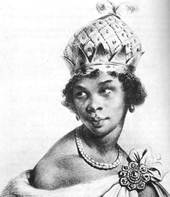
Of course, it wasn’t until later when other European countries became interested in the trading of Africans, that it was realized that these people were not ancestors at all. But, by that time, the damage had already begun and only a few like Queen Nzingah had tried to undo the deeds of their elders.

Those Kongo people carted to New World, probably thought that they were being punished by their ancestors and therefore dragged to the underworld, as the Europeans loaded them upon their ships with white sails, and sailed across the great abysmal waters of Kalunga.
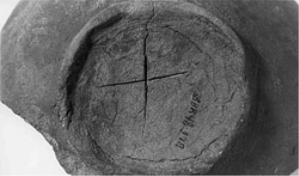
It was only after arriving in the New World, that the Kongo people realized different and probably had the same revelation as their siblings did in their homeland. I will not talk about the various traditions that were created in the New World as a result of this interaction, but in the United States.

The Kongo people already familiar with Christian concepts began adapting, modifying and altering the faith to suit their purposes. It is only when you see a ring shout or hear coded songs used by slaves who escaped to freedom that you realize, that these Africans didn’t convert to Christianity nor were they forced to accept it. Let me say that again.
All of the Africans were not forced into Christianity. This is a myth.
They modified Christianity to suit them or as some would say Africanized Christianity.
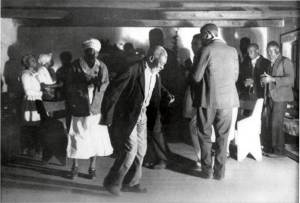
Examples of this Africanized Christianity can be seen all throughout history from the Ring Shout to the speech by Dr. King in Washington. During the Great Awakening when Africans supposedly converted to the Methodist and Baptist faiths because of baptism. A closer look will reveal that the Kongo descendants changed the Kalunga concept of water, which is where the Dead resided to the Holy Spirit. For instance, even the great Apostolic and Pentecostal movement that occurred on Azusa Street is another example of African Spiritism. Today, when you hear people talk about this, they make it seem as if everything was okay, but many white Christians have known all long that their version of Christianity had been tainted with a foreign system. This is why one of the so-called fathers of the Azusa Street Movement, Charles Fox Parham, initially denounced according to Rev. Thomas L. Kinkead as an event taken over by “hypnotist”, “spiritists” and fortunetellers. This is because the actual founder of the movement was a black student of Parham named, William J. Seymour. Clearly, Seymour unfamiliar with African Spirituality in 1906, had taken the spirit of the ancestors and now gave it the name Holy Ghosts, which is why people “speak in tongues” when they are struck by the Spirit.

Now, I am not saying all of this to ridicule anyone because of his or her faith. I am just trying to get you to understand that most of the Christian rules performed in the church today are African – particularly Kongo – influenced. Even the whole spirit descending down can be traced to a particular spirit that is believed to perch up high and descend among followers, called “cymbees”, which is derived from the BaSimbi spirits, a type of ancestral spirit with a tricky nature.
Why the Kamitic/Kemetic Philosophy?
Our ancestors made Christianity theirs out of survival because that is how the Kongo belief system was, it adapts to survive. This is the reason almost 700 years later we can still trace it back to the Kongo origin and go even further back to Kamit/Kemet.
The reason for the Kamitic/Kemetic philosophy is because I have learned that when a tradition is practiced with no spiritual science, it degenerates and becomes superstition. This is the state that most of our people are in. They just go to church because it is the thing to do. The remedy for all problems you will hear people say, “Go to church and pray” as if that will make everything all right. This is because the African spiritual sciences haven been lost and prior to the advent of the slave trade. Many Europeans didn’t have any spiritual sciences either. If they had they wouldn’t have blessed the slave trade, the Salem burning of women and all of the other atrocities that have occurred under the guise of Christianity.

Fortunately, Kamit/Kemet has remained unchanged and even though people can claim what they want. We can always go back and compare notes because their beliefs were chiseled in stone. As a result, it becomes a simple “Show and Prove” when you understand the Kamitic/Kemetic teachings. If anyone claims that a certain thing came from Kamit/Kemet, all we have to say is prove it and by that. I do not mean just show where it exist in some book, but prove it in life. This is what I have tried to do with the Maa Aankh and even though there are no books or any other references that indicated that the Kamitic/Kemetic people had such a cosmogram. You can clearly see the cultural connections.
When we put aside the intellectual babble and start to trust our intuition.
This is when we get into the real power because Osar you see refers to indwelling intelligence within us that is associated with our elevated ancestors. All we have to do is listen to the voice within that is encouraging us to take the higher road. This Voice that speaks from within is full of knowledge and wisdom, which is why Hru could never defeat Set until Osar stepped in to the picture. This is why the double Pschent crown was so important because it was a visual and spiritual reminder to be strong on the outside but to trust your intuition because it is wiser and stronger.
This is what Osar was all about and why I am so grateful for having learned about it. And, one day when we choose to move beyond the intellectual perspective and truly delve into the invisible spiritual perspective. That is when we will see the beauty of our own traditions and really appreciate it all.
Hope this helps.
Hetepu
Derric “Rau Khu” Moore
For a full discourse see: Maa Aankh Volume 1: Finding God the Afro-American Way By Honoring the Ancestors and Spirit Guides.
Return to So, Early Christian Stole From Kamit/Kemet Now What? Pt.1

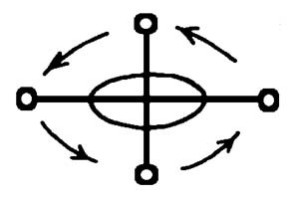


This is really enlightening, thanks.
Very well written! And even better than part one. Great in depth research. Keep it up brother. Peace.
Hetep
Thanks again for your support.